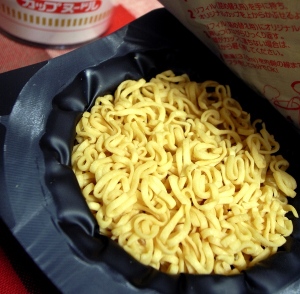Next to barbecues, Asian noodles have become a popular meal served on Aussie dining tables. You see them, especially the packs of instant noodles or the stunning long, creamy (white salted or Udon style) or yellow (alkaline, Cantonese or ramen style) noodles, displayed in heaps on the market stand. Noodles (not to be confused with pasta) have long been a staple food in many parts of Asia and in fact these products account for around one third of Australia’s wheat exports. In Asia, a significant portion of noodles are sold in a fresh or raw form and usually not cooked by the consumer for 1-2 days after purchase. The problem: uncooked noodles darken with time and develop dark specks thereby becoming less attractive and reducing their marketability.

Researchers at the School of Agriculture, Food & Wine have made an effort to address this problem by conducting biochemical and genetic research. According to Dr Robert Asenstorfer, a School research fellow, the cause of darkening in noodles is a combination of enzymatic or non-enzymatic. “Enzymatic means that noodles turn dark due to an enzyme called Polyphenol oxidase (PPO),” Asenstorfer explained. He added that PPO can produce dark spots on noodles within 24 hours while non-enzymatic (non-PPO) darkening is responsible for the general darkening of the noodle.
“Our research has addressed the problem by developing wheat lines that contain low PPO activity. The next step involves an attempt to lower the propensity for non-PPO darkening.”
To investigate the non-enzymatic cause of noodle darkening, Asenstorfer and his fellow researchers have conducted a physical-chemical analysis to understand the mechanism. Asenstorfer said it is important to understand the complexity behind the darkening so we know how to control or manage the problem.
Results of their research reveal two reasons behind the non-enzymatic darkening of noodles. First, they found matrix changes of the noodles that are physical rather than chemical in nature. “When all the ingredients for making noodles are mixed together, a rearrangement of components occurs resulting in changes in the physical appearance of the noodle to make it look darker,” Asenstorfer explained. Moreover, darkening, according to team’s research findings, can be attributed to chemical oxidation of protein which results in the production of black compounds.
There is little that can be performed to address the issue of non-enzymatic darkening, Asenstorfer suggests, besides making noodles with the minimum acceptable protein level.
Funded by Grains Research and Development Corporation, the research team is composed of Associate Professor Daryl Mares, Dr Robert Asenstorfer, Dr Marie Appelbee and Mrs Christine Kusznir.
Written by Ronan Zagado